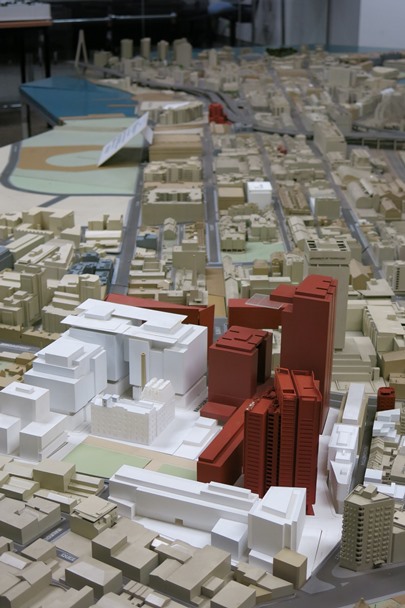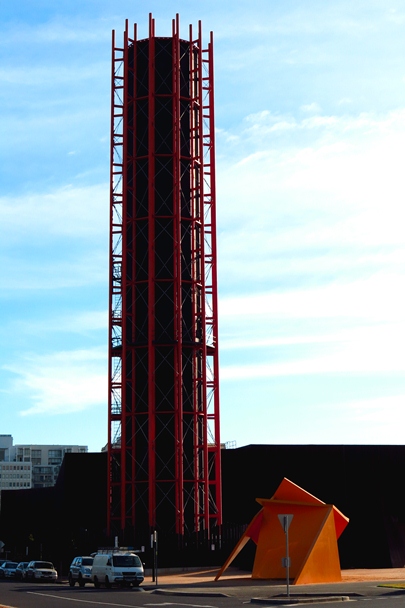I am not an art aficionado, but I do enjoy fine art for what it does. It inspires me to look at an interpretation of the world through someone else’s eyes and elicits a response from me as well. One of the best know Australian modern artists is Jeffrey Smart, who is still alive and spritely in his 90s. He would have to be one of my favourite artists. His style is described as “precisionist”, but I do not quite believe he can be categorised as such – particularly given that the main proponents of this style were mainly American and (Ralston Crawford aside) the colours were mainly subdued pastels. In my opinion, he views the world in a truly unique architectural perspective while still seeing the art of the form. The colour in his paintings is bold and in your face. My favourite painting is one of his titled simply “Reflected Arrows” (1974), as seen below.
“Reflected Arrows” (1974)
His earlier pieces contained many portraits, including famous Australian authors of his generation – David Malouf, Germaine Greer, and one could say Clive James in “Cahill Expressway”. But there are two of Smart’s paintings which were burnt deep in my memory for their form and symmetry. The first being “Holiday” (1971) and the second being “Housing Project no. 84” (1970). Who would have thought that an artist born in the early 1920s would interpret the built world in the 1970s in such a way – and it would appear life imitates art in modern architecture today.
“Holiday” (1971)
“Housing Project no. 84” (1970)
So my amateur photographer’s eye caught the patterns and shapes of a few buildings over the last two weeks that immediately brought me back to the memory of these paintings. While Smart works with canvas, I work with light and pixels (on a sensor). Obviously the tone of the mediums is different, but I hope I captured the essence of what Smart did in his paintings. BTW – as usual my photos images link through to the larger size photos on Flickr.
On a side note – someone had a look at pretty much all my public photos on Flickr a couple of days ago. This was some 420 photos in total. Whoever you are, you made an amateur photographer feel happy that he could share his photos with you.























![Lake Dillon and a Tree [In Explore] Lake Dillon and a Tree [In Explore]](https://live.staticflickr.com/65535/53731226172_4004cbfea4_s.jpg)

